PEGGY GUGGENHEIM

|
Peggy Guggenheim, the niece of Solomon R. Guggenheim of the New York art institution, often described herself as an “art addict” - a statement her impressive personal collection can attest to. Eager to differentiate herself from her family, which had gained its fortune through mining in the early 20th century, Guggenheim decided she would make her mark on the world by collecting art and forging relationships with the avant-garde makers of the time. While her lineage and bank account certainly opened doors for her, Peggy's distinct taste and style, as well as her noted ability to recognize and nurture young artistic talent, cemented her place within the global art scene during a time of unpredented change. Her career spanned the modern era, linking the Dada and Surrealist movements with Abstract Expressionism, and she collected and championed artists from Vasily Kandinsky to Jackson Pollock to Alexander Calder.
|
|
"I TOOK ADVICE FROM NONE BUT THE BEST. I LISTENED, HOW I LISTENED! THAT'S HOW I FINALLY BECAME MY OWN EXPERT"- Peggy Guggenheim |
|
|
|
Largely self-taught when it came to art, Peggy was guided by her interest in creativity and rejection of the status-quo. After arriving in Paris in the 1920s, she used her personal connections to traverse the noted ex-pat circles of that time. She moved in the same circles as Brancusi, Marcel Duchamp, Man Ray, and Paul Poiret. In fact it was during a visit to a foundry with German-French sculptor Jean Arp that Peggy was inspired to collect her first piece of art after holding Arp's small bronze Head and Shell in her hand.
|
Peggy Guggenheim at the Greek Pavilion for the 24th Venice Biennale in 1948, where she exhibited her collection. |
|
Arshile Gorky, Untitled, 1944 |

Julio González, “Monsieur ” Cactus (Cactus Man I), 1953-4 |
It was not until Peggy moved to London in the late 1930s, fleeing the Nazi occupation of the Eurpean continent, that she opened her first gallery: Guggenheim Jeune. From Paris to London, she quickly amassed one of the most prominent collections of Cubist and Surrealist art during a period when few others held these works in high regard. Her initial collection, acquired at a rate of one painting per day on frenzied trips to Paris during World War II, cost her only $40,000 for a group of works by Brancusi, Georges Braque, Salvador Dalí, Ernst, Fernand Léger, and Pablo Picasso, among others. During her time in London, the Irish writer Samuel Beckett once excalimed to Peggy, “one should be interested in art of one’s time". The idea quickly became one of Peggy's mottos and the ethos of her second gallery, Art of This Century.

Peggy Guggenheim seated on a Correalist Rocker in the Surrealist Gallery of Art of This Century, New York, 1942 |

Willem de Kooning, Nude Figure–Woman on the Beach, 1963 |

Henri Laurens, Head of a Young Girl, 1959 |

Jackson Pollock, Enchanted Forest, 1947 |

Guggenheim with Pollock, New York, 1946 |
With Art of This Century, which opened in New York in 1942, Peggy created an American outpost for the European avant-garde, providing artists with connections, sales, and commissions on new soil. She soon forged relationships with a new generation of American artists like Pollock and Robert Motherwell, who had their first notable gallery shows at Art of This Century. Peggy counted Pollock’s success as among her proudest achievements.

Marino Marini, The Angel of the City, 1948 |
|
|
Mark Rothko, Red, 1968 |

Guggenheim at her home in Venice, 1961 |

Cy Twombly, Untitled, 1961 |
Art of This Century was a stepping stone, closing in the late 1940s because Peggy had tired of the pace of the gallery business. After relocating to Venice, Peggy showed her collection in the 1948 biennale, helping to reestablish the exhibition series after the war. A few years later, Peggy acquired the 18th-century Palazo Venier dei Leoni on Venice's Grand Canal to house her art. The Peggy Guggenheim Collection remains in business today.
|
Peggy in Venice during the 1960s |
|

Frank Stella, Gray Scramble, 1968-9 |
|
|
Germaine Richier, Tauromachy, 1953 |

Andy Warhol, Flowers, 1964 |
For Peggy, according to her granddaughter, curator Karole Vail, “her life and her art collecting were completely intertwined". She made few distinctions between her business and private lives - even her two marriages were to artists, Dadaist Laurence Vail and Surrealist Max Ernst. Her string of flirtations with creatives like Samuel Beckett and Constantin Brancusi were well known. Modern in her taste for art as well as in her femininity, Guggenheim once said: "I was a liberated woman long before there was a name for it."

Guggenheim in Venice, 1969 |
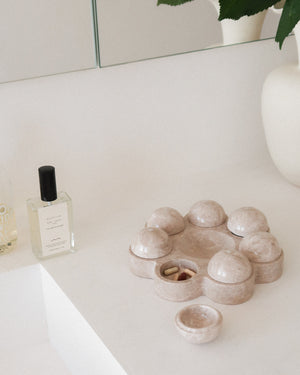
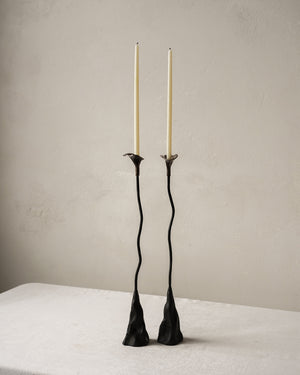
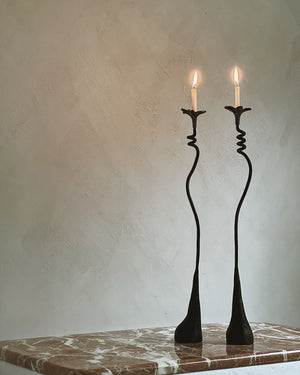
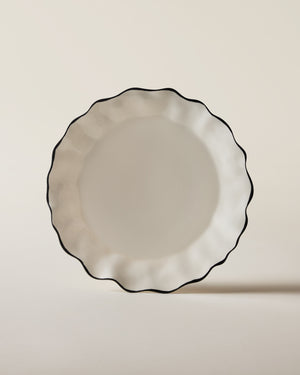
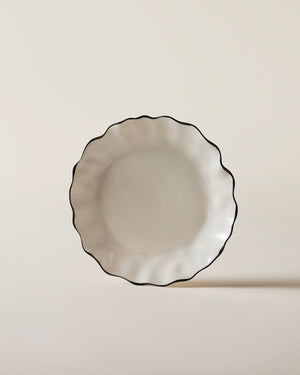
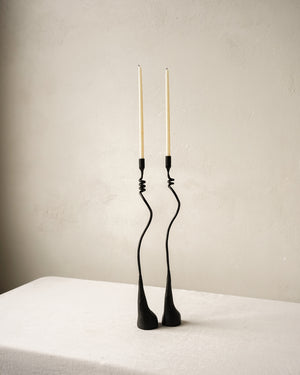
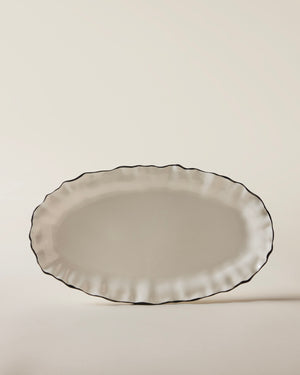



 Jean Arp, Head and Shell (Téte et coquille), ca. 1933
Jean Arp, Head and Shell (Téte et coquille), ca. 1933





